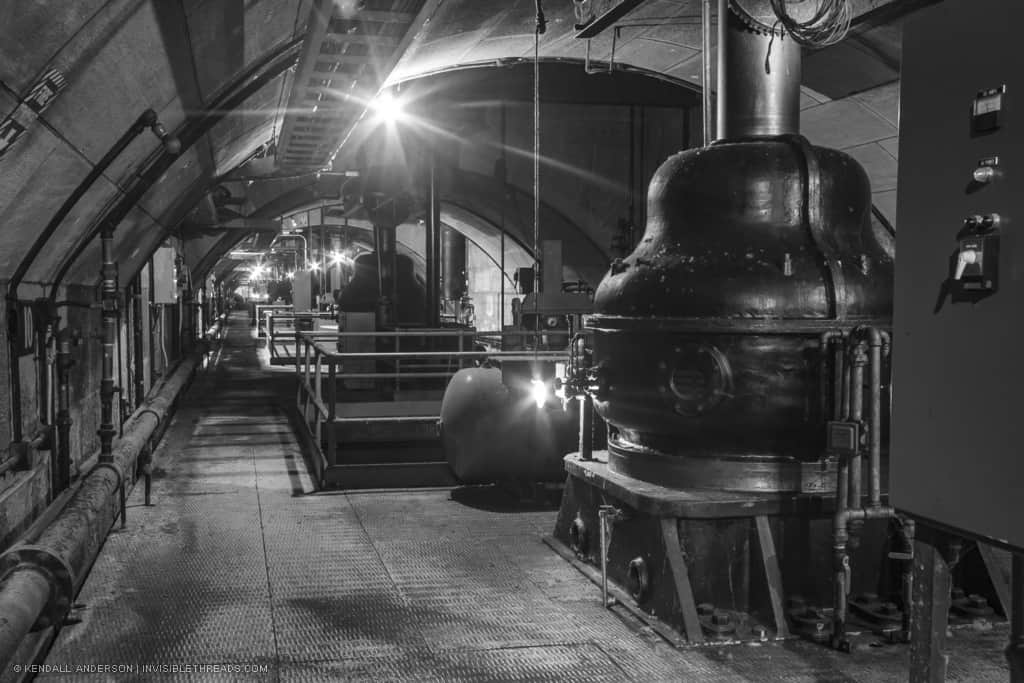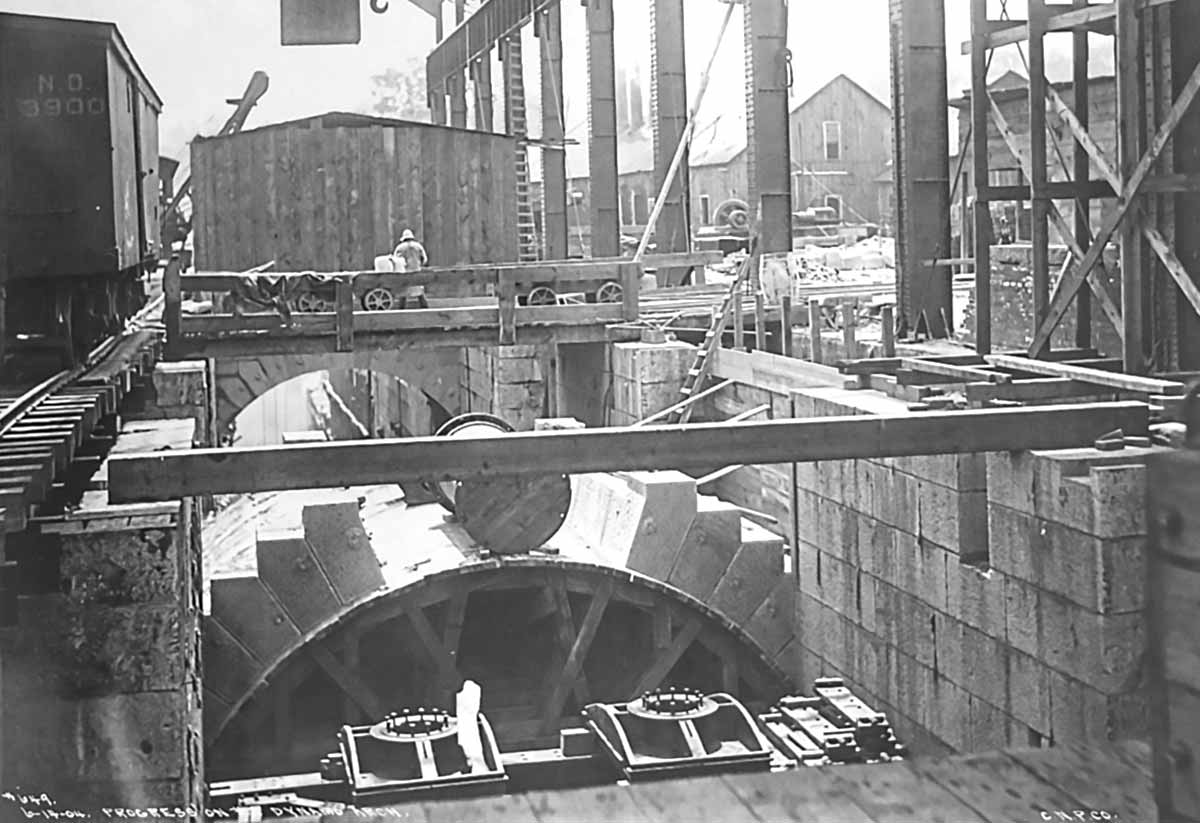
Thrust Deck Support Nov 23, 2006
We're on the thrust deck, one floor beneath the Power House.
The large vertical pipe you see is the shaft that is being spun by the turbine blades below. This is connected above to the rotor inside the alternator, which would be spinning around 250 RPM. All that equipment above—the alternator—weighs about 90 tons.1 The bell-shaped item surrounding the pipe is the thrust bearing.
The other thing to notice here is the stone arch. That massive arch is supporting those 90 tons of rotating equipment. It takes that load and distributes it out to the sides. There is one of these for each of the 11 generators on the floor above in the power house.

Thrust bearings absorb the axial load from a rotating shaft. If you use the example of a drill, this is what takes the load from you pressing against the drill. The alternators are large spinning pieces (like the drill bit), and the housing of copper and steel weighing down on the floor is the same as the force of you pressing on the drill. Again, 90 tons of it.
- Ball, N. R. (2005). The Canadian Niagara Power Company Story. Erin, Ont.: Boston Mills Press in association with FortisOntario.